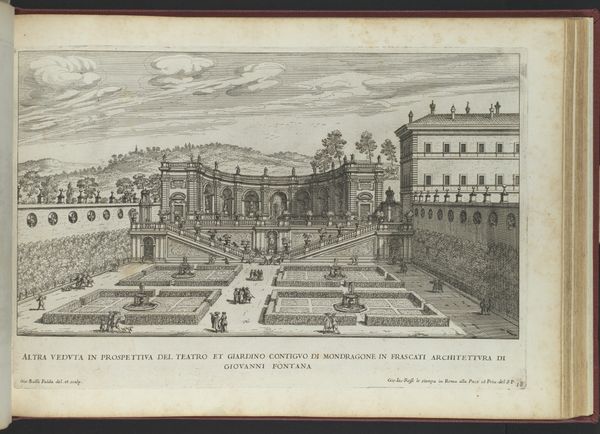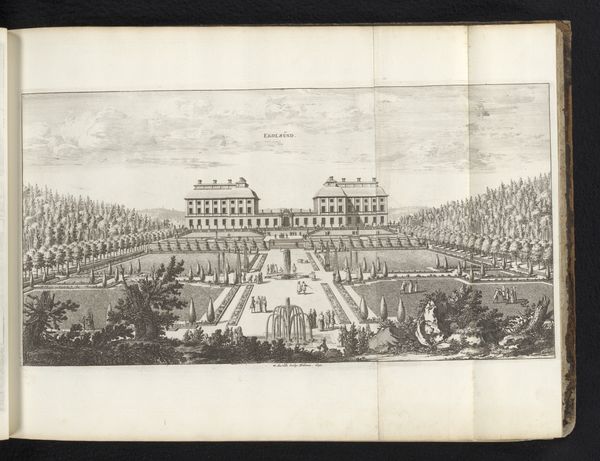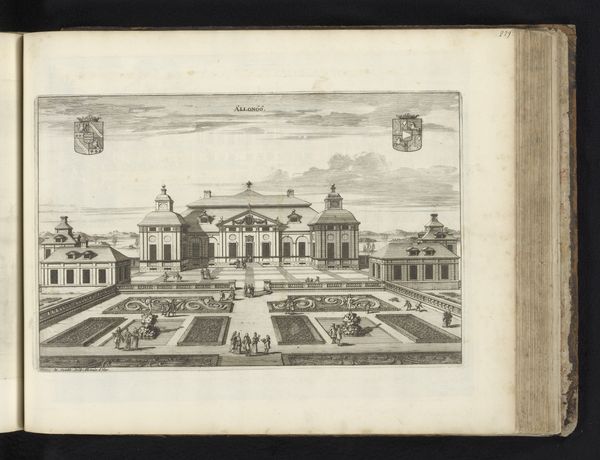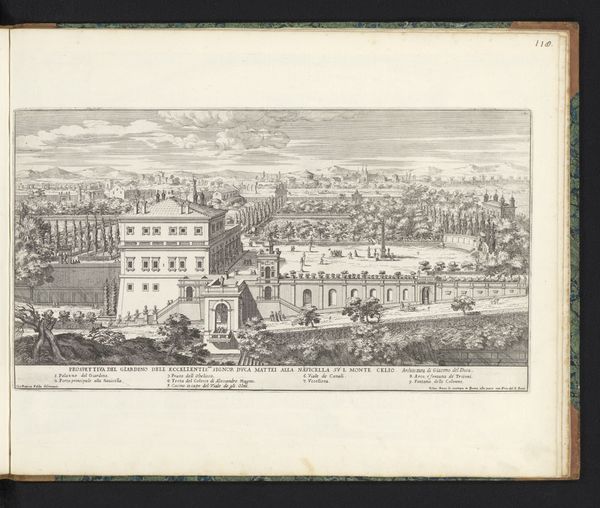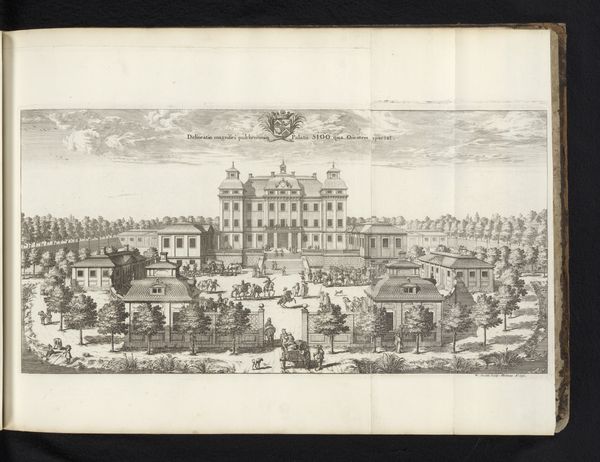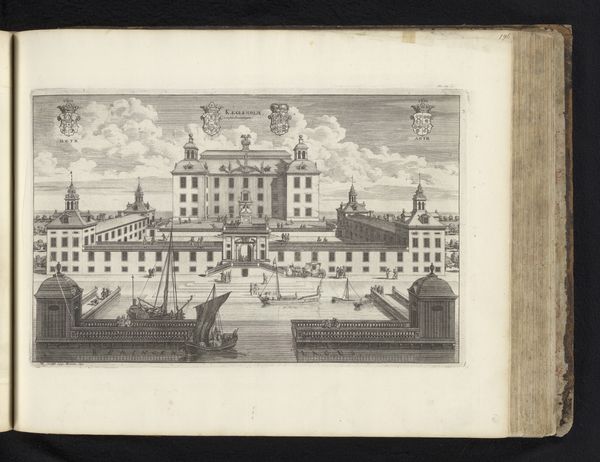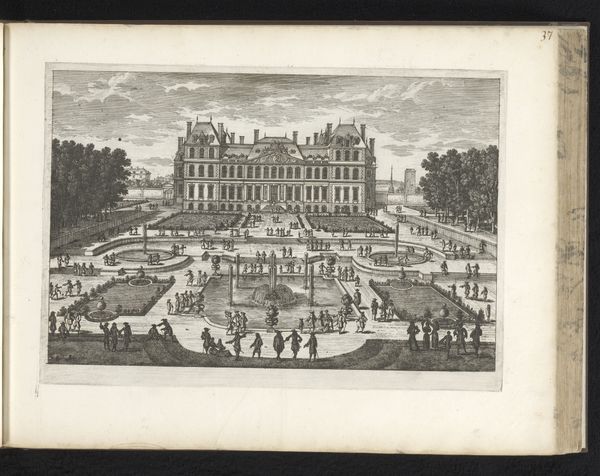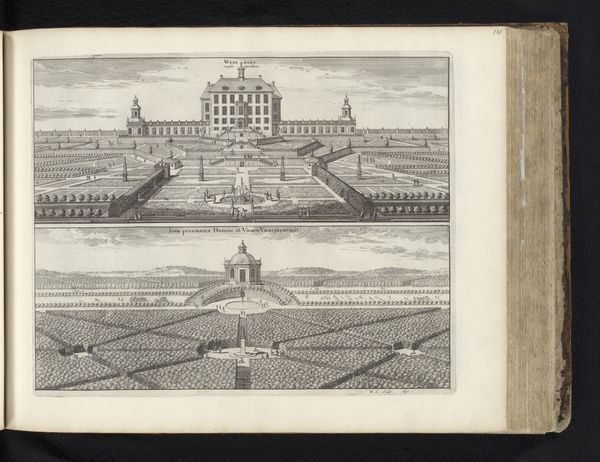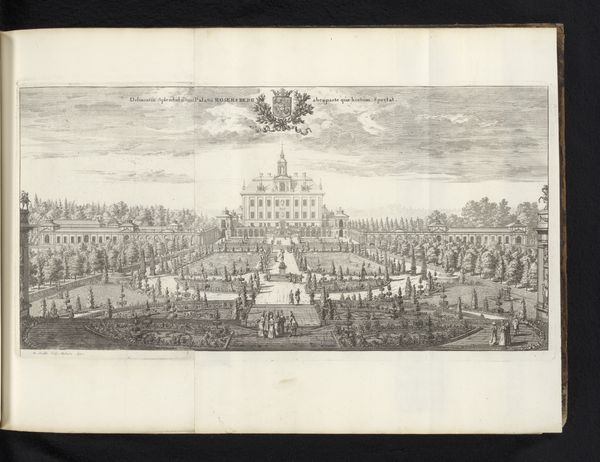
print, etching, engraving, architecture
#
baroque
# print
#
etching
#
landscape
#
cityscape
#
engraving
#
architecture
Dimensions: height 213 mm, width 422 mm
Copyright: Rijks Museum: Open Domain
Curator: This print, crafted by Willem Swidde around 1696, offers us a glimpse into the majestic Sjöö Castle and its meticulously designed gardens. The artwork, entitled "Gezicht op slot Sjöö aan de tuinzijde," resides here at the Rijksmuseum. Editor: Immediately, what strikes me is the composition. It's meticulously organized, almost rigidly so. The linear perspective guides your eye directly to the castle, anchoring the entire scene. The contrasting darks and lights of the engraving add a touch of drama, wouldn't you agree? Curator: Absolutely. That formality mirrors the social and political climate of the late 17th century, when aristocratic power was visually expressed through landscape design. These gardens weren't just for pleasure; they were a statement of control, reflecting the owners' dominance over nature and society. The presence of the figures strolling in the gardens highlights the intended audience and their social standing. Editor: The architectural details are fascinating too. See how the geometric forms—the spheres, the squares, the precise lines of the pathways—create a sense of order? It speaks to a desire for rationality and control that was prevalent in the Baroque period. Curator: Precisely. The print is a document, not just an aesthetic object. It serves to record and disseminate a certain image of power and prestige. The very act of commissioning such a print, circulating it among the elite, reinforced the social hierarchies of the time. It created a shared visual language that upheld the existing order. Editor: Looking closely, you see the technical skill required to achieve such precise detail with etching and engraving. Each line seems carefully considered, contributing to the overall effect of grandeur. This kind of refined execution would have been greatly valued at the time. Curator: I find it compelling how the idealized landscape contrasts with the often harsh realities of life for the vast majority of the population during that era. It represents a world accessible only to a privileged few. Editor: Agreed. The artist really emphasizes the geometric precision. It is all about control through design. Ultimately, though, that design helps elevate and reinforce status. Curator: Indeed. Viewing "Gezicht op slot Sjöö aan de tuinzijde" in the museum context offers an understanding of the visual vocabulary of power in 17th-century Sweden. Editor: And from a visual perspective, it’s a masterful example of perspective, composition, and meticulous line work combining to make the image come to life.
Comments
No comments
Be the first to comment and join the conversation on the ultimate creative platform.
